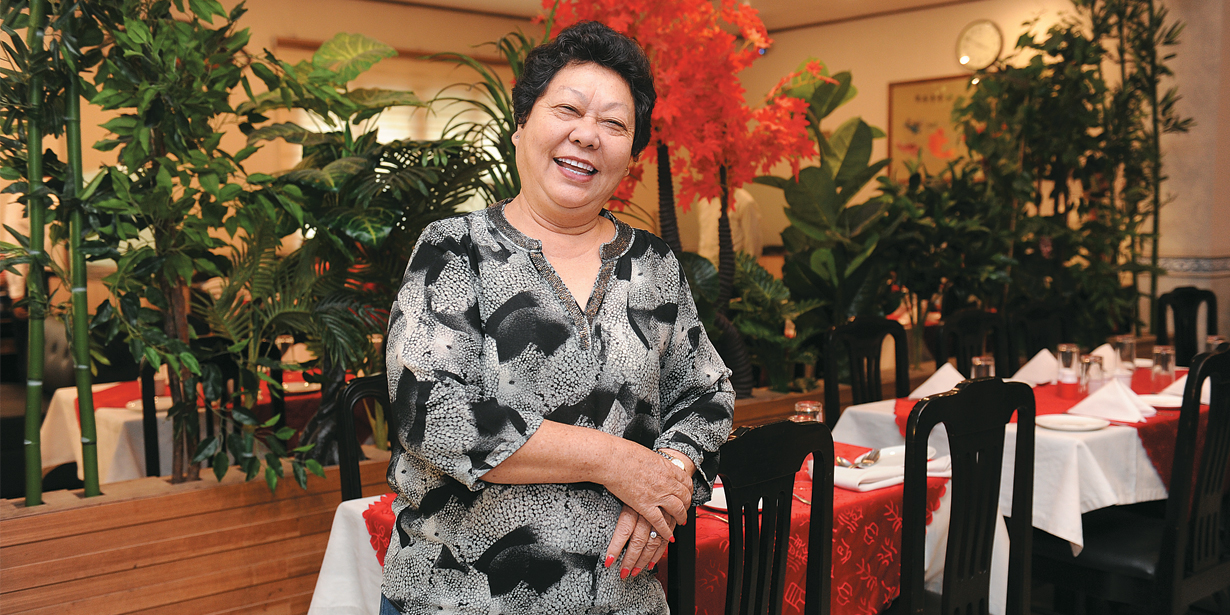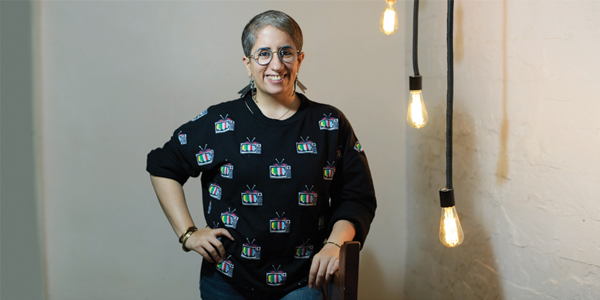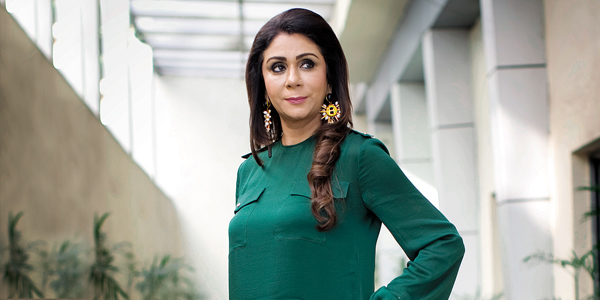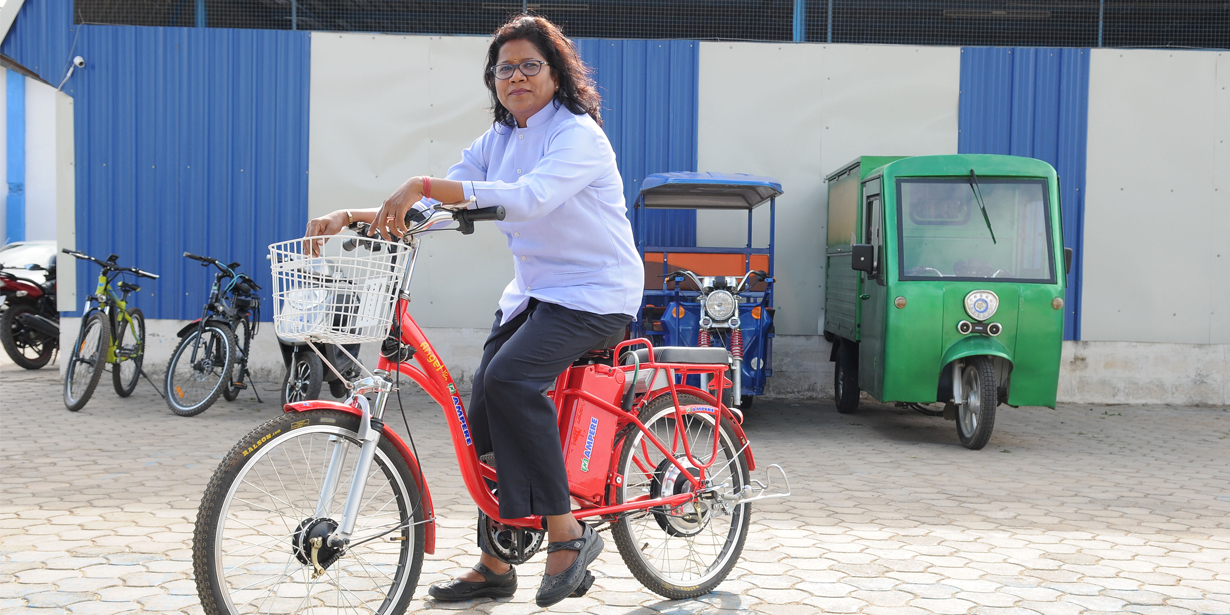She’s the reason your online orders reach you bang on time: Meet coder-in-chief Manisha Raisinghani
Manisha Raisinghani fine tunes her algo every day to ensure that deliveries, including lovingly chosen gifts, reach their destinations on time.
Manisha Raisinghani is nothing less than a breath of fresh air in her industry. Her product itself — a proprietary algorithm that is ushering in the ‘Next’ wave in logistics — tackles the problem of wasted time, fuel and manpower in delivery. And as the team chips away at her dream of on-time deliveries, Raisinghani makes sure they do it in an office that screams fun. There are machine-learning formulae splashed across walls in every colour, a stunning view of Mumbai’s original start-up hub — Powai — for easy inspiration, and the sounds of someone taking the in-house guitar for a spin.
 But most importantly, when everything from the rough shop floor of supply-chain management to the glitzy tech conferences were reserved for “tech bros”, the CTO of one of India’s fastest growing tech companies chirpily coded her way in.
But most importantly, when everything from the rough shop floor of supply-chain management to the glitzy tech conferences were reserved for “tech bros”, the CTO of one of India’s fastest growing tech companies chirpily coded her way in.
“While I come from a traditional Marwadi business family, I was raised to pursue my dreams regardless of my gender. The only pressure I faced was the kind every ‘smart’ Indian kid typically faces — to choose between medicine and engineering. Something in my gut pushed me towards technology. But my family has an established business in wired connectivity — GR Electrics. So, when I decided to branch out on my own with SaaS in logistics, it was a stark digression,” says Raisinghani.
She procured her masters in Management Information Systems from the Carnegie Mellon University in 2012, and secured a job at IBM the US as a senior consultant. Here she worked for nearly two years till January 2014, and “dealt with terabytes of data”, a facet of the job she absolutely revelled in.
In the Diwali of 2013, far away from home, she decided to courier gifts to her family, and tried to time the delivery as accurately as she could. Yet, the supply chain failed her and presents landed long after the festive spirit waned.
“I kept thinking how the delivery company could have ensured that my package was delivered on time. I reverse engineered each aspect and structured an algorithm to improve probability of on-time deliveries. I knew the value of the breakthrough I had just made,” she says.
Logistical delays cost an enterprise dearly in money and customer loyalty. They lose about 10-20 cents on every dollar spent on logistics, so overall impact is only 80% of their actual ability (even lower in some cases, based on the complexity of their logistics).
She was a partner at IBM, and she faced a dilemma — is her breakthrough idea worth a leap of faith, or should she see her slow but steady corporate climb at IBM to fruition? “The decision didn’t turn out to be all that difficult, surprisingly. I simply used the effort versus impact analysis, and calculated how much effort each would take and charted its corresponding impact on the industry, on the BCG matrix (Boston Consulting Group matrix), with effort and impact on the axes — the choice was clear. This method helps you in key decisions and setting your priorities straight almost every time,” she says. Reading Lean In authored by her role model Sheryl Sandberg, and watching her TED Talk on women leadership had already stoked a “fire in her belly”. She quit her job in January 2014, and got cracking at her idea immediately.

Upon learning that her ex-Carnegie classmate and fellow dreamer Dhruvil Sanghvi also felt just as strongly about fined-tuned logistics, she teamed up with him.
It was Raisinghani who wrote the first line of code — and for the next eight to nine months in 2014 and 2015, the two kept their heads down and coded relentlessly. “People assume that I handle the business end of things while Dhruvil might be the techie — but I take pride in my role of being the CTO,” she says. The team also worked closely with prospective clients, travelling on their delivery trucks and measuring LogiNext’s solution against legacy systems. So they were able to measure the edge that they had over rivals, which helped a great deal in client conversion.
She explains the shift in supply chain she had engineered. Consider that you just received an order from a customer, and you have promised them next-day delivery. This is where the magic of LogiNext’s software unfolds — advanced scheduling that takes into consideration real-time route and traffic conditions and cuts down on delivery time drastically. The system factors in everything from live traffic patterns and the carrying capacity of trucks to skill-sets of drivers. Drivers are evaluated for their handling of special vehicles (whether a refrigerated vehicle or a heavy goods trailer), their handling of various goods (white goods such as furniture or heavy electronics) and their savviness with the locality and route.
Taking the shipment and resources of each client as inputs, LogiNext calculates the capacity of the logistics company and the geographical area that can be covered by it. It divides each client’s resources uniformly based on geographical codes and draws up suitable routes for delivery staff who receive them on their smartphones.
LogiNext’s app even helps at the loading point where handlers use it to scan-in individual packages and, at the end point, where customers can rate their experience. “With LogiNext, they can save up to 20% of their logistics costs and increase their efficiency to 90%,” says Raisinghani.
Microsoft and Reliance incubated the start-up towards the end of 2014, and readied it to hit the markets commercially. Raisinghani held the fort bootstrapped until April 2015, when they raised $600,000 of seed money from IAN (Indian Angel Network) — right when the logistics industry was truly coming into its own. Their Series A followed soon, just half a year later, and they secured $10 million from Paytm. The founders now had the confidence to set their sights on global markets too.
The beauty of SaaS and LogiNext’s algorithm, says Raisinghani, is that it can be scaled to any geography worldwide — and hence, knocking on international doors with a cutting-edge product was always part of the plan. “It was never really an India or Asia-focussed product,” she says.
Finally, in 2016, with initial few paying customers from Singapore, Hong Kong, and Dubai, LogiNext debuted internationally. By the end of the year, in 2016, it was tracking more than 100,000 shipments and saving its clients’ foot-soldiers roughly 50,000 miles of redundant travel per day. Today, it tracks half a million orders a day across 50,000 drivers, globally.

At one point, Raisinghani had flirted with building their own hardware that would be best compatible with their offering — but, in order to remain agile and quickly scalable, being hardware-agnostic was the proven route.
Her main tenet for scaling up seamlessly, however, is shifting from an operational to an executive role. Since 2016, Raisinghani’s 20-member family has grown into a 200-strong clan. “As you grow, it’s important to let go of peripheral responsibilities. You must rope in highly-qualified and talented teams,” she says. And thankfully, she states, leadership even in traditional male bastions such as tech is becoming more and more gender-agnostic, at least in the circles she has been fortunate to move in.
With over 200 clients, Raisinghani and the team have taken on players in ten countries across North America, Southeast Asia, Middle East, and Europe, with aggressive plans to enter at least ten markets. “I really don’t know which time zone I am living in currently — because we have operations all over. I also attend a lot of conferences around the world, especially SaaS and logistics-focussed events,” she says. According to a study conducted by Novonous, titled ‘Logistics Market in India 2015-2020,’ the industry in India is worth $300 billion and is expected to grow at a CAGR of 12.17% by 2020. India spends nearly 13% of its GDP on logistics while developed countries spend around 8-10% thanks to access to better technology. That’s the gap LogiNext is trying to fill. LogiNext, clocking $3 million in revenue currently, has managed to grow at over 300% year on year. Its clients include Mahindra Logistics, Paytm, Reliance, Adani, Maruti Suzuki, Decathlon, D-Mart and Myntra. The company has a self-subscription model where companies can go online, subscribe to their service and start using the software almost instantly.
Internationally, Owler states that its key competitors would be the US-based OnFleet, which is neck to neck with LogiNext in revenue. US-based Telogis and Israel-headquartered Bringg far surpass LogiNext on that metric — while the former’s revenue stands at $112 million, Bringg’s is nearly 1.7x that of LogiNext’s. However, Manisha claims that their algo offers nearly 160 optimisations, a fine-tuning unavailable with their rivals.
Raisinghani spends 20% of her time in recruitment every day. And as a woman leader, she personally ensures that the start-up’s hiring process is bias free. “With zero pre-conceived notions about when someone may get married or have children, I am always looking for the best technical and cultural fit for the organisation,” she says. The rest of her time is spent ensuring their tech architecture is infallible and optimal. “Tech and product are my love and I always look forward to them!” she says.














































































